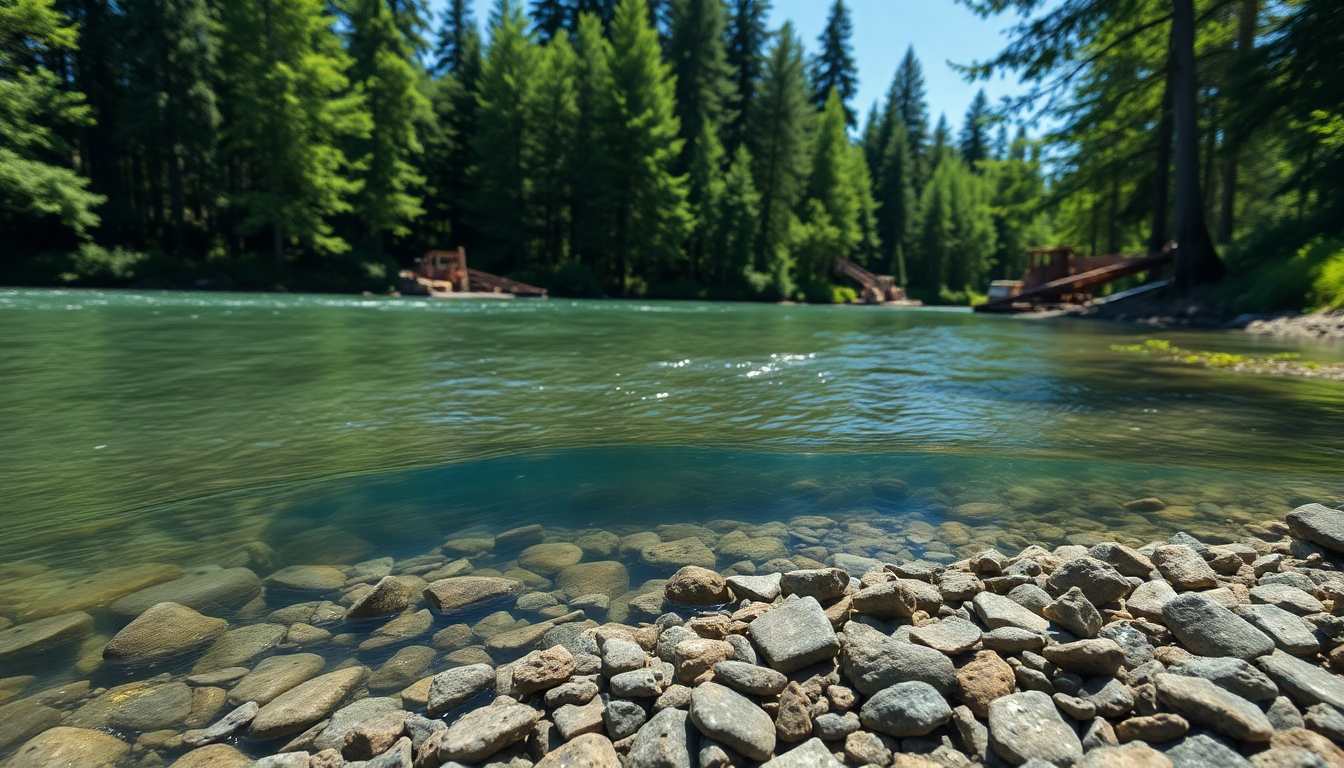Table of Contents
It’s a tightrope walk balancing economic activities with environmental conservation, isn’t it? Recently, a significant win for conservationists in British Columbia has got people talking. Fisheries and Oceans Canada (DFO) has ordered an immediate halt to controversial gravel mining operations on a stream that serves as a vital spawning ground for salmon. This decision comes after tireless advocacy from biologists who have been vocal about the harmful impacts of mining on local fish populations.
Understanding the Background
The alarm was first sounded by biologists John Werring and Marvin Rosenau when they stumbled upon a troubling sight: a cluster of dead fish in a dried-up salmon spawning bed last December. This shocking discovery prompted them to dig deeper into the gravel extraction activities carried out by the Canadian Pacific Kansas City Railroad (CPKC), which had been ongoing for years. Their investigation revealed that extensive gravel removal had not only dewatered a significant wetland but had also diminished a crucial salmon habitat.
Rosenau didn’t hold back his frustration, pointing out that the gravel extraction affected more than just the immediate area; it also contributed to a drop in the water table, threatening the ecological integrity of the surrounding environment. The tributary in question, part of Norrish Creek, is essential for salmon spawning and rearing, making this mining issue critical for our ecosystem.
How the Government Responded
Despite the clear environmental fallout, the government’s initial response was underwhelming. This lack of action pushed Werring and Rosenau to seek legal help to escalate their concerns. Their proactive strategy paid off when lawyers from Ecojustice sent a demand letter that finally caught the government’s attention. Shortly after, the DFO announced that any gravel extraction would require explicit authorization, marking a significant turning point for the conservationists.
While this ban on mining activities is a fantastic step forward, many are still concerned about how long it took for the government to respond. Conservationists argue that swift action is critical to combat environmental threats, and the slow response highlights the urgent need for better communication from regulatory bodies. Rosenau recognized the importance of the recent changes but stressed that ongoing vigilance is essential to prevent future ecological harm.
What’s Next: Remediation and Future Actions
With the DFO’s directive in place, CPKC has stepped forward, confirming its commitment to work with the government on a remediation plan aimed at restoring the affected habitat. This collaboration is crucial to ensuring that salmon populations not only bounce back but also flourish in their natural environment. The success of this initiative will hinge on how effective the remediation strategies are and how well the ecosystem is monitored going forward.
As conservation advocates celebrate this hard-fought victory, it serves as a powerful reminder of the importance of environmental stewardship. It highlights the vital role community advocacy plays in shaping policy decisions. The situation in British Columbia underscores a pressing need for ongoing dialogue between government agencies, environmental organizations, and the public to protect our natural resources for generations to come. So, what can we learn from this? Perhaps it’s time for all of us to get involved and make our voices heard in the conversation about our planet’s future.


